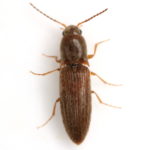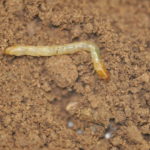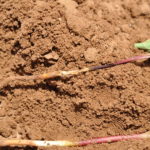Early-Season Pests (Emergence to the first one-thirdgrown square–about 1/4 inch in diameter)
Thrips
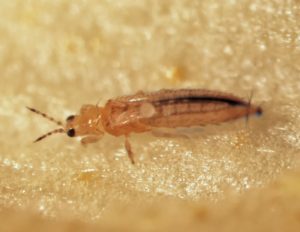
Figure 6. Adult thrips. Photo by David Kerns.
The most common species of plant-feeding thrips in Texas cotton include flower thrips, onion thrips, and western flower thrips.
Thrips are slender, straw-colored insects about 1/15 inch long, with piercing-sucking mouthparts (Fig. 6). Adults are winged and capable of drifting long distances in the wind. They attack leaves, leaf buds, and very small squares, causing a silvering of the lower leaf surface, deformed or blackened leaves, and loss of the plant terminal (Fig. 7). Under some conditions, heavy infestations may reduce stands, stunt plants, and delay fruiting and maturity. Thrips damage is most evident during cool, wet periods when seedling cotton plants are growing slowly. Rain, blowing sand, wind, residual herbicide damage, and seedling diseases can worsen thrips damage.
Under favorable growing conditions, cotton can sometimes recover completely from early thrips damage. In areas in which seedling emergence typically occurs under warm conditions, thrips are usually of minor concern.

Figure 7. Young cotton leaves damaged by thrips feeding. Photo by Suhas Vyavhare
Management and Decision Making
Insecticide seed treatments have become an industry standard.
Seed treatments usually provide thrips control until the two-to-three- true-leaf stage. In areas with a history of frequent, heavy thrips infestations, consider using systemic insecticides in addition to treated seed. Foliar sprays are often applied too late to prevent damage, and research shows that applying foliar sprays after significant thrips damage occurs does not increase yields.
Growers who may need to use post-emergence sprays should:
-
- Scout fields twice a week as the cotton
- Begin inspections once the cotton reaches about 50 percent stand
- Randomly select 25 plants from four regions of the field and inspect them, looking for adult and immature thrips
- Look carefully through the terminal growth, picking it apart with a pencil lead, toothpick, or another pointed object, uncurling all of the leaves (Fig. 8). Thrips often hide in tight locations, especially during rainy, windy conditions
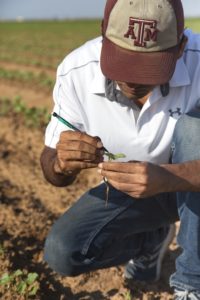
Figure 8. Sampling for thrips. Photo by Suhas Vyavhare
- Look at the tops and undersides of each leaf, paying particular attention to the area where the leaf veins intersect the central leaf vein.
Thrips can migrate in large numbers from adjacent weeds or crops, especially as small grains dry down, causing significant damage in just a few days. Pay attention to immature thrips (Fig. 9), because their populations can increase rapidly through in-field reproduction as seed treatments become ineffective. Thrips development, from egg to adult, takes from 2 to 3 weeks. Infestations at the cotyledon and one-leaf stage often reduce yield more than later infestations.
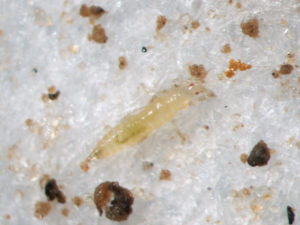
Figure 9. Immature thrips. Photo by David Kerns.
Chemical Control and Action Thresholds
Preventive in-furrow or seed treatments usually provide adequate thrips control until the second true-leaf stage. However, under adverse growing conditions, a foliar treatment may still be necessary. Base the decision to apply an insecticide on the number of thrips present and the stage of plant development. As plants add more leaves, the number of thrips per plant needed to justify an insecticide application increases. Treat fields from cotyledon to first true-leaf stage when one or more thrips per plant are present. Resistance to neonicotinoids has been confirmed in thrips species in other parts of the Cotton Belt, but, so far, not in Texas.
Wireworms
Wireworms (click beetle larvae) and false wireworms (darkling beetle larvae) are cotton pests in the Texas High Plains (Figs. 10 and 11).
The larvae of these species are very similar, and it is difficult to distinguish wireworms from false wireworms. They are hard-bodied, smooth-skinned, elongated, cylindrical, and up to 1¼ inches long.
Creamy white to yellow or light brown, their heads are typically darker with small true legs clustered near the head and no abdominal prolegs (Fig. 12). They move by slowly pulling themselves with their legs while dragging their bodies. Wireworm larvae are soil-dwellers, and you will not see them unless you remove them from the soil. They feed on decaying vegetation, roots, seeds, and other subsurface plant parts.
Wireworm attacks on cotton (including wireworms and false wireworms) tend to be most severe following grain crops (especially sorghum), in fallow or weedy ground, or in reduced-tillage systems. Overwintering larvae inflict the most damage as they become active in the spring. However, darkling beetle adults have been known to girdle or clip seedling cotton off at the soil surface much like a cutworm (Fig. 13).

Figure 14. Christmas-tree-like growth from subsurface wireworm feeding on the plant terminal. Photo by David Kerns
The larvae damage cotton by feeding on the root, hypocotyl, and cotyledon of plants before the plants emerge from the soil. Root feeding can kill plants but usually results in stunting. The most severe damage occurs when the hypocotyl is severed, killing the plant and reducing the stand. Larvae also feed on the growing point of the plant, causing a loss of apical dominance. These plants often have a Christmas tree appearance after they emerge (Fig. 14).
Management and Decision Making
In the spring, growers, scouts, and consultants should look for darkling beetles and their damage from planting to the four- to five- leaf stage. Darkling beetle adults can enter cotton fields from corn, pastures, sorghum stubble, or weedy areas. These beetles are a threat only if they cut off the seedling plants, reducing the stand (Fig. 15).
Chemical Control and Action Thresholds
Minimize wireworm infestations through clean cultivation and clean fallowing. Infestations are most severe in no-tillage or reduced-tillage situations, particularly following alfalfa, cover crops, or grain. Planting shallow and under warm conditions often allows cotton seeds to germinate quickly so plants can outgrow wireworm injury potential rapidly.
Treat wireworm larvae preventively. Insecticidal seed treatments are the most effective way to prevent wireworm damage. Treat for darkling beetle adults only when they are present in large numbers, plant clipping is evident, and unacceptable stand reduction is probable.
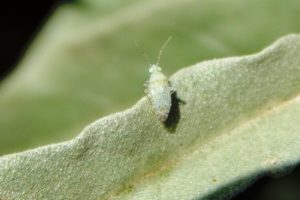
Figure 16. Cotton fleahopper adult. Photo by Salvador Vitanza.
Cotton Fleahoppers
The cotton fleahopper adult is about 1/8 inch long, with piercing-sucking mouthparts and a flattened body (Fig. 16). Adults are active flyers; they readily flit within the cotton canopy when disturbed, which makes insect sampling a challenge. Their eggs are not visible because the adult inserts them into the cotton plant stem.
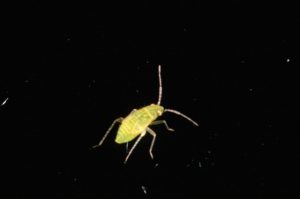
Figure 17. Cotton fleahopper nymph. Photo by Winfield Sterling
Adults are pale green to gray-green; nymphs are lighter-colored with reddish eyes (Figs. 17 and 18). Nymphs are very small and often confused with other plant bugs such as the verde plant bug and lygus bugs. Small black dots on the hind tibiae (fourth segment of the leg) distinguish late instar cotton fleahopper nymphs from other common plant bug nymphs.
In both the adult and nymphal stages, cotton fleahoppers suck sap from the tender portions of the cotton plant, including small squares. Pinhead size and smaller squares
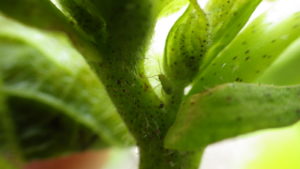
Figure 18. Cotton fleahopper nymph. Photo by Xandra Morris
are the most susceptible to cotton fleahopper damage. Fleahopper feeding causes squares to die and turn dark brown. These “blasted” squares dry up and fall from the plant, leaving a characteristic scar on the fruiting site (Fig. 19).
When fleahoppers are abundant, heavy square loss can cause poor boll set and reduce yield. The first 3 weeks of squaring are the most sensitive to cotton fleahopper feeding, particularly in dryland cotton production.
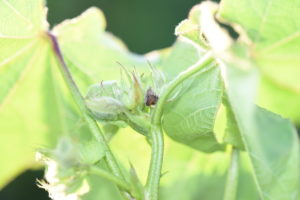
Figure 19. Blasted square. Photo by Suhas Vyavhare.
The yield-cotton fleahopper relationship shifts with plant stage, water stress, weather, and cultivar sensitivity. Early squares are at high risk when large populations migrate into cotton from healthy stands of wild hosts that survived mild winter conditions. Yield reduction and development delays tend to be more pronounced in water-stressed cotton. Cotton fleahoppers can be more plentiful in vigorously growing cotton under good rainfall and irrigation, but their damage is less severe.

Figure 20. Plant terminal inspection. Photo by Pat Porter
Scouting and Decision Making
There are two recommended scouting methods for cotton fleahoppers: terminal inspection (Fig. 20) and beat bucket sampling (Fig. 3). Table 4 provides action thresholds for terminal inspection, and action thresholds for beat bucket sampling are in development.
For terminal inspection:
- As the first squares appear (approximately four- to six-leaf stage), examine the main stem terminal (about 3 to 4 inches of the plant top) of 25 plants in at least four locations across the fi Sample more sites in fields larger than 80 acres.
- Scout fields for cotton fleahoppers weekly. Cotton fleahoppers move into cotton in early summer as noncrop host plants mature and become Under wet spring conditions conducive to the rapid buildup of cotton fleahoppers in alternate hosts (such as cutleaf evening primrose, horsemint, silverleaf nightshade, and woolly croton), shorten the scouting intervals to every 3 to 4 days, especially as the alternate host plants begin maturing or undergo drought stress.
- When approaching a plant to sample, watch for adults that might fly from it. Cotton fleahoppers move quickly. Adults may fly away and immatures often hide within the plant canopy when disturbed.
Terminal inspection is applicable to all cotton production regions of Texas, and action thresholds are available (Table 4).
Beat bucket sampling is another sampling method for cotton fleahoppers. This sampling procedure is under development. Based on studies from South Texas, the beat bucket method is more effective in sampling for nymphs and more consistent for inexperienced users than the terminal inspection method. However, research to validate thresholds based on the bucket sampling method is currently incomplete. Thus, at this time the bucket sampling method is recommended only as a means to detect cotton fleahopper infestations.
Chemical Control and Action Thresholds
Depending on the region, thresholds range from 10 to 30 cotton fleahoppers per 100 plants (Table 4). Preliminary studies indicate beat bucket thresholds will be higher. A range of 20 to 40 adults and nymphs per 100 plants is being tested in South Texas (Table 4). In some regions, combine insect density with square-set during the first 3 weeks of squaring.
After first bloom, fleahopper control is rarely justified. Insecticides applied during early bloom can result in outbreaks of aphids, bollworms, and tobacco budworms because of the destruction of predaceous insects and spiders. Avoid using broad-spectrum insecticides after the second week of squaring.

